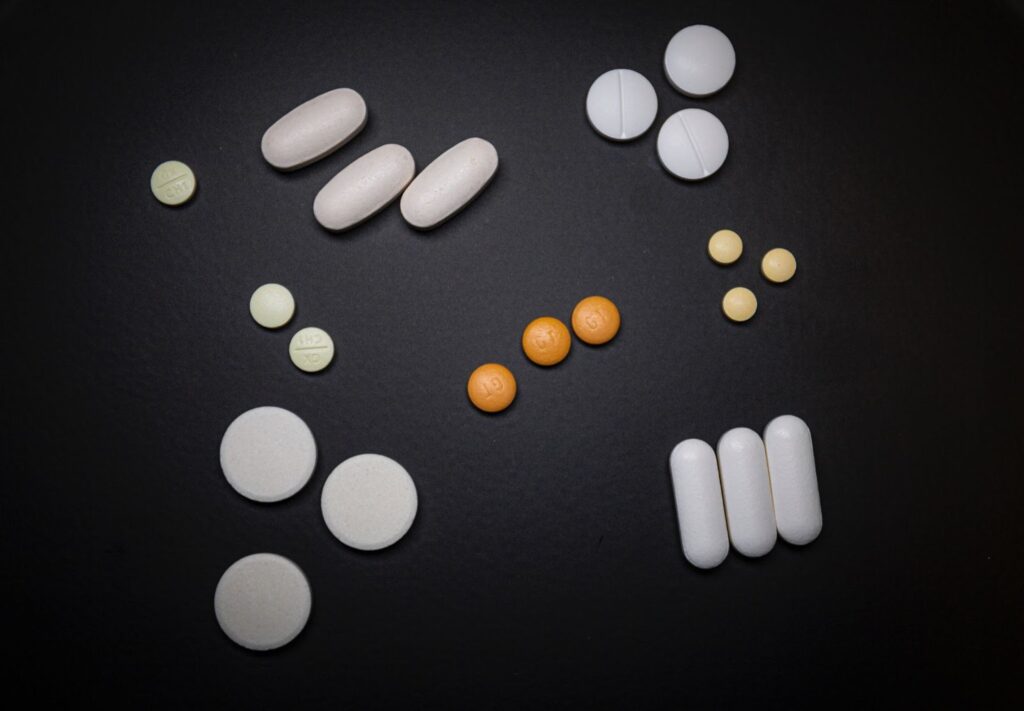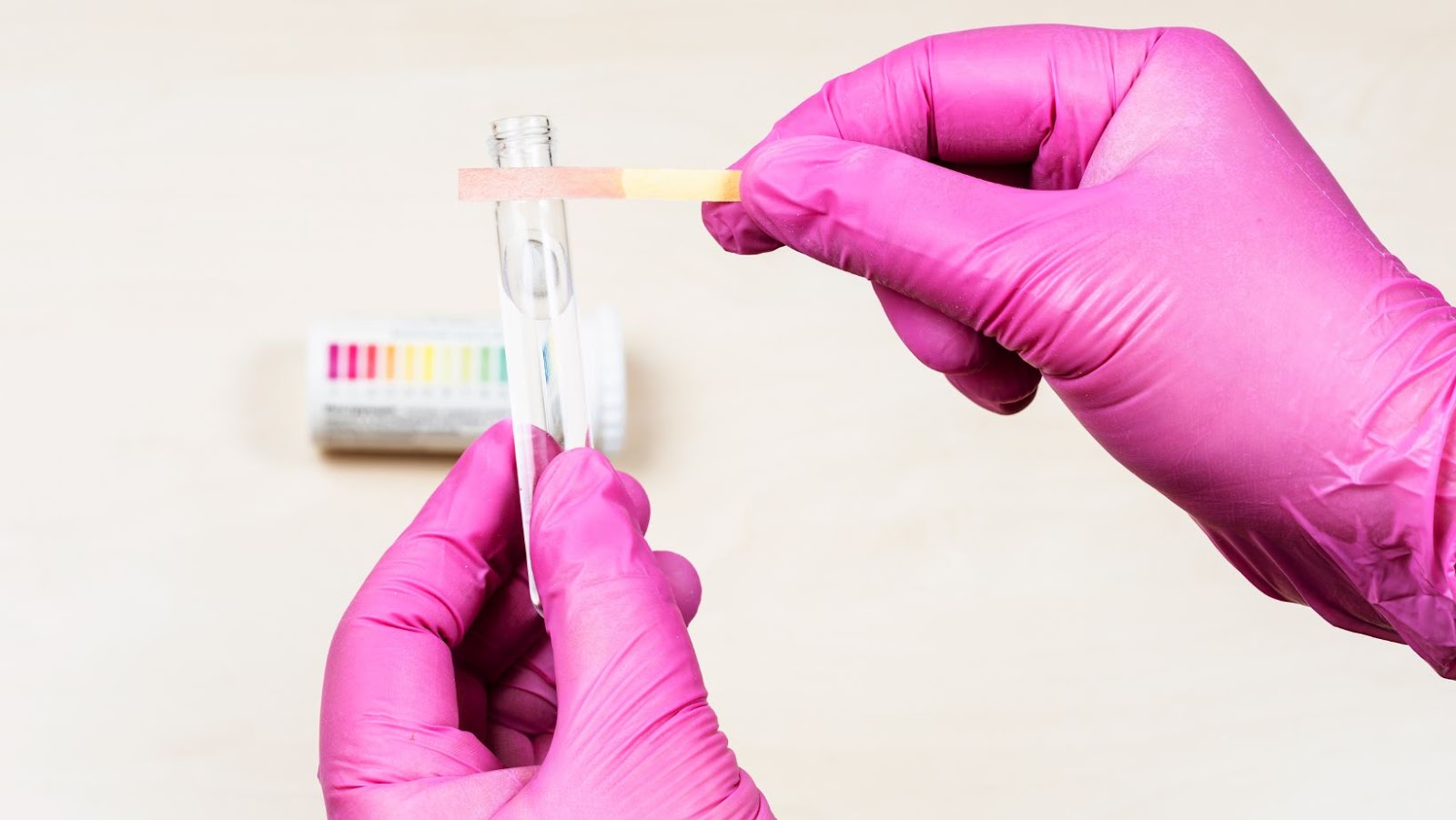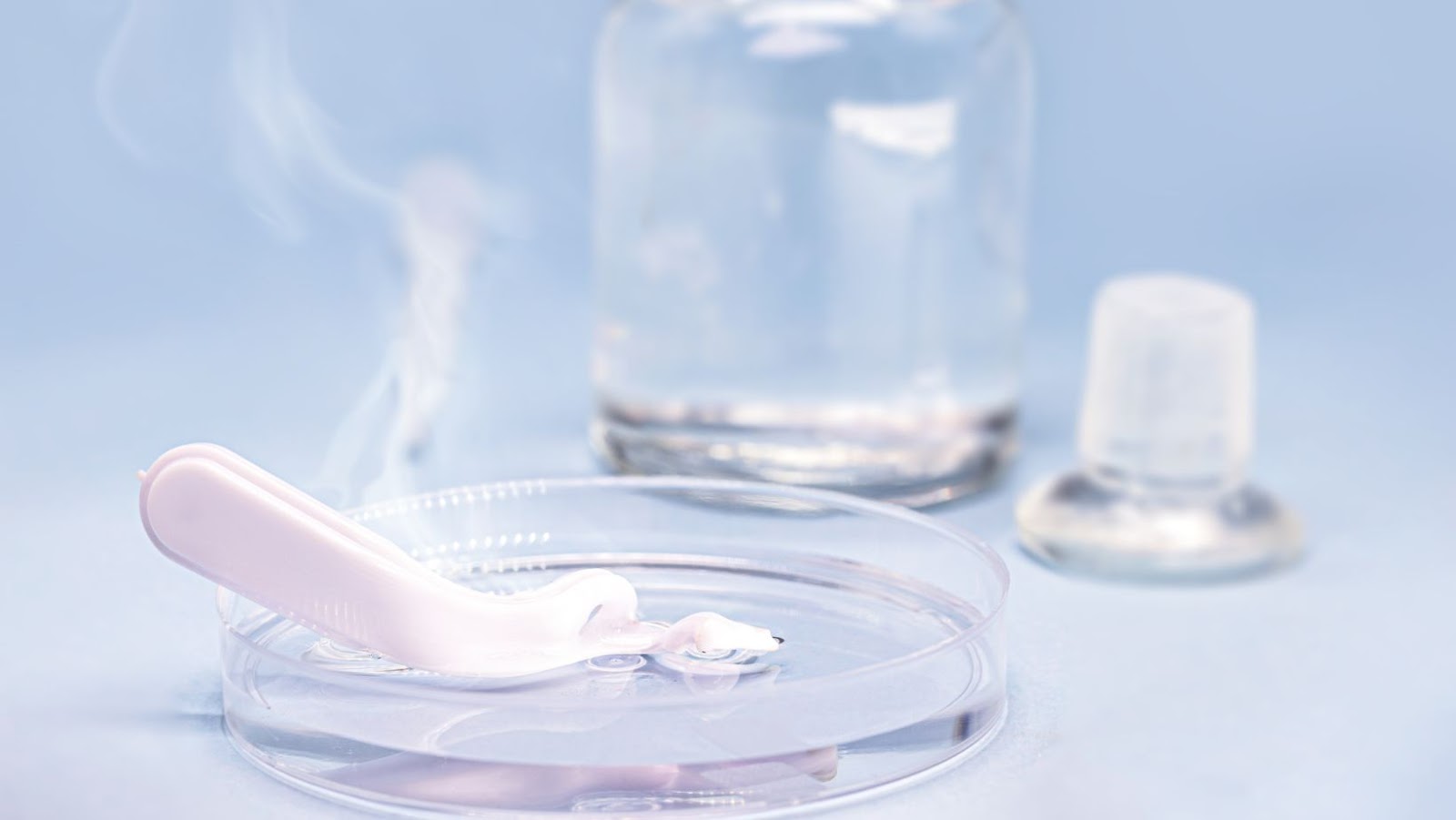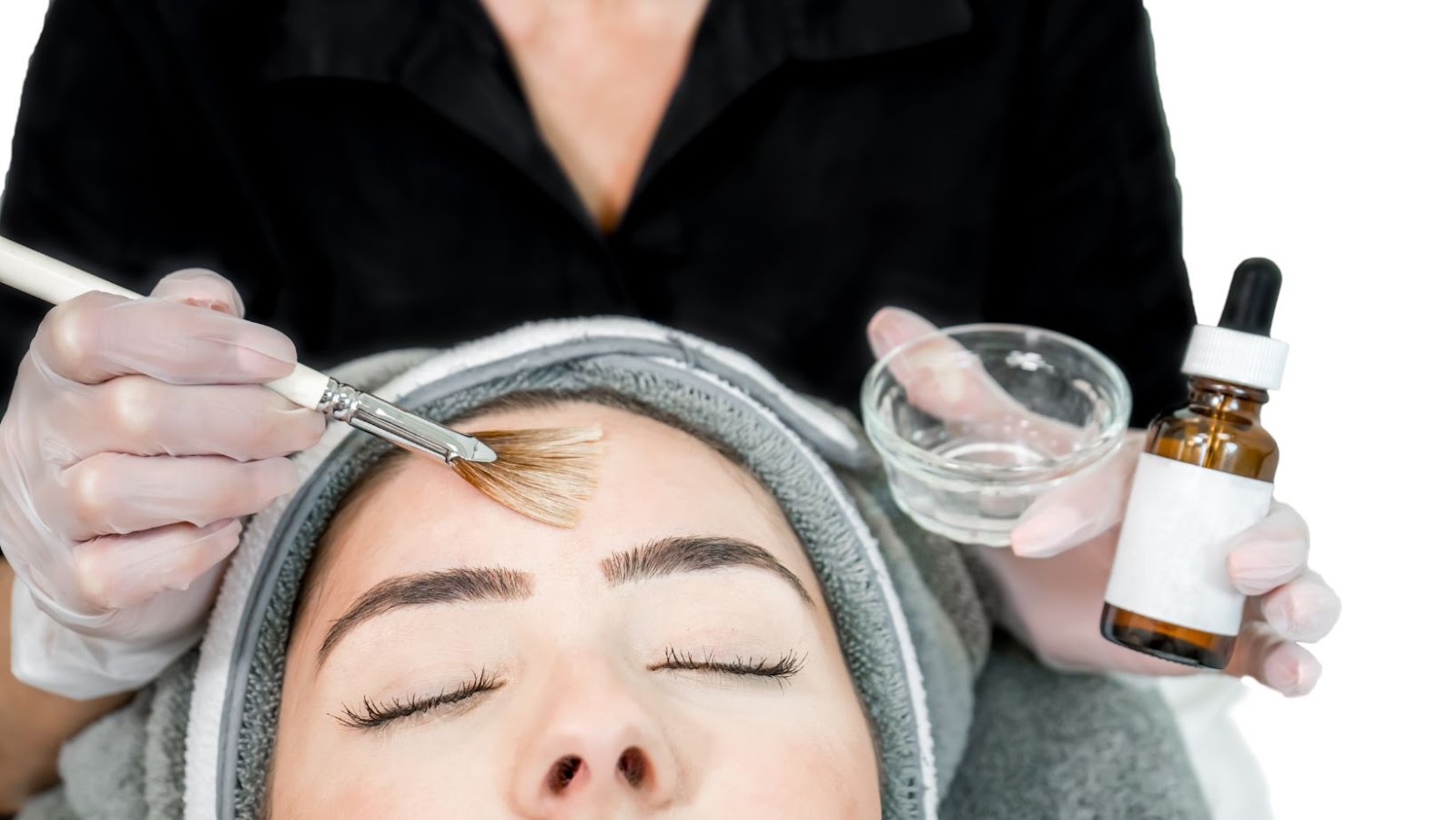
Precautions To Take When Using DMSO
When using DMSO, it is crucial to take all the necessary precautions to ensure safe handling and avoid any negative side effects.
Here are the precautions to take when using DMSO for topical use:
| Dilute DMSO before use: |
| Before applying DMSO to the skin, it is essential to dilute it with distilled water or aloe vera gel. The recommended concentration for topical use is 70% DMSO and 30% distilled water/aloe vera gel. |
| Avoid using on sensitive or damaged skin: |
| DMSO can cause skin irritation, particularly on sensitive or damaged skin. It is advisable to avoid using it on the face, near the eyes, or on areas with broken or inflamed skin. |
| Wear protective gloves: |
| DMSO can penetrate the skin and cause absorption of other chemicals in contact with it. Wear latex or nitrile gloves before handling DMSO to protect your skin and avoid contamination. |
| Store in a cool, dry place: |
| DMSO is a highly reactive substance and can break down if exposed to light, heat or moisture. Always store it in a cool, dry place away from direct sunlight. |
Following these precautions can help you enjoy the benefits of DMSO while minimizing the risk of negative side effects.
Pro tip: Always consult a doctor or medical professional before using DMSO for any medical condition.
Understanding DMSO
DMSO is often used for topical application and is known for its natural pain-relieving properties. Knowing the proper dosage and dilution process for DMSO is essential for its effective use, and proper precautions should be taken to ensure its safe usage.
In this article, we will discuss the basics of DMSO, its properties and benefits, and how to dilute it for topical use.
What is DMSO?
DMSO (Dimethyl sulfoxide) is a colorless, non-toxic liquid that is known for its ability to penetrate the skin easily and act as a carrier for other substances. It has been used in medicine for its anti-inflammatory and pain-relieving properties.
It is important to take precautions when using DMSO, as it can cause skin irritation or allergic reactions in some people. It is also important to dilute DMSO properly before using it topically to avoid skin irritation.
Here’s how to dilute DMSO for topical use:
|
|
|
When using DMSO, always wear gloves to protect your skin, and use it only in a well-ventilated area. It is also important to avoid contact with eyes, nose, and mouth.
How Does DMSO Work?
DMSO (Dimethyl sulfoxide) is a popular solvent and topical ointment known for its anti-inflammatory, pain-relieving, and wound-healing properties. It works by penetrating the skin and cell membranes and dissolving other substances. DMSO is a potent substance and should be used with caution. It can cause skin irritation, nausea, headaches, and other symptoms if used improperly.
To dilute DMSO for topical use, it is recommended to use distilled or sterile water, saline solution, or aloe vera juice. Do not use tap water or other impure substances, as they may interact with DMSO and cause adverse effects. Once diluted, apply DMSO to the affected area using a clean and dry cloth or cotton swab. Avoid inhaling or ingesting DMSO and keep it away from your eyes and mouth. Always consult with a healthcare professional before using DMSO for any medical condition.
| Pro Tip: | When using DMSO, always wear protective gloves and use in a well-ventilated area to avoid any side effects. |

Benefits of Using DMSO
DMSO, also known as Dimethyl Sulfoxide, is a versatile compound that has several benefits when used in a variety of applications. When used topically, it has powerful anti-inflammatory properties that make it an excellent treatment for sore muscles and joints. It can also help to improve skin health by reducing inflammation and promoting wound healing.
To dilute DMSO for topical use, it is recommended to mix it with distilled water at a ratio of 70/30, with 70% of DMSO and 30% of distilled water to reduce the risk of skin irritation.
It is important to take precautions when using DMSO, as it can penetrate the skin quickly and easily. It should never be used on broken or irritated skin, and it is recommended to wear gloves when handling it to avoid any adverse effects. Additionally, DMSO should only be used under the guidance of a qualified healthcare professional to minimize the risk of side effects.
Safety Precautions When Handling DMSO
DMSO is a powerful ingredient that needs to be handled with precaution and care. As it is a solvent, it can penetrate through the skin and even through the gloves. It is important to understand how to dilute DMSO for topical use in order to reduce the risks of using DMSO topically.
In this article, we will discuss the safety precautions when handling DMSO as well as how to dilute it for topical use.
Wear Gloves and Protective Gear
DMSO is a powerful solvent that can carry other substances through the skin barrier and into the bloodstream, making it an effective carrier for topical medications. However, to use DMSO safely, it’s important to take proper safety precautions, including wearing gloves and protective gear.
Here are some safety tips to keep in mind when handling DMSO:
| Always wear gloves, goggles, and a lab coat or apron when handling DMSO. |
| Use DMSO in a well-ventilated area to avoid inhaling fumes. |
| Avoid contact with skin, eyes, and mucous membranes. If you do come into contact with DMSO, rinse the affected area with water immediately. |
| When diluting DMSO for topical use, use a 70% DMSO to 30% distilled water ratio for best results. |
Follow these safety precautions to use DMSO effectively and avoid potential health hazards.
Store DMSO Properly
Dimethyl sulfoxide (DMSO) is a powerful solvent commonly used for topical applications due to its ability to penetrate the skin. However, it is important to handle DMSO with caution and store it properly to avoid any hazards.
Here are some safety precautions to take when handling DMSO:
| Always wear gloves and goggles when handling DMSO to avoid skin and eye irritation. |
| Never store DMSO in a plastic container as it can dissolve plastic and contaminate the product. Store in a glass or metal container. |
| Keep DMSO away from open flames and heat sources as it is flammable. |
| To dilute DMSO for topical use, mix it with distilled water or aloe vera gel in a ratio of 1:1. Avoid using tap water as it may contain impurities that can react with DMSO. |
| Always label DMSO properly with the date of purchase and expiration date. |
Proper storage and handling of DMSO can ensure its effectiveness and prevent potential hazards.

Avoid Contact With Eyes, Skin, and Clothing
DMSO is a powerful solvent that can pose health risks if proper safety precautions are not taken. One of the primary safety precautions is to avoid contact with eyes, skin, and clothing when handling DMSO, especially when preparing a dilution for topical use.
Here are some safety tips to follow:
| Wear protective gloves, a lab coat, and safety glasses. |
| Use in a well-ventilated area, as DMSO quickly evaporates and can reach high concentrations in the air. |
| Use a precise measuring tool to ensure accurate dilution. |
| Avoid skin and eye contact by pouring the DMSO carefully and slowly while inching the container’s opening closer to the diluent. |
| Store DMSO in a closed and labelled container, away from flammable material. |
| In case of contact, wash affected area immediately with water to eliminate the concentrate. |
With these safety measures, DMSO can safely and effectively be used for various applications, like relieving pain, reducing swelling in arthritis, and treating bladder inflammation.
How to Dilute DMSO for Topical Use
Diluting DMSO before topical use is an important safety measure to take in order to prevent potential skin irritation or other side effects. It’s essential to know how to do this correctly to ensure that you are using the right amount of DMSO for your particular application.
In this article, we’ll cover how to properly dilute DMSO for topical use and why doing so is important.
Why Dilute DMSO?
DMSO (dimethyl sulfoxide) is known for its ability to penetrate the skin and carry other substances through it. However, diluting DMSO is important to prevent skin irritation and other adverse reactions when using it topically. Highly concentrated DMSO can cause redness, itching, and burning sensations.
To dilute DMSO for topical use:
|
|
|
|
It’s crucial to store diluted DMSO in an airtight glass or plastic container away from heat sources, humidity, and direct sunlight to prevent contamination and evaporation. It’s also vital to wear gloves when handling DMSO as it can carry other substances across the skin, including harmful chemicals that may be present on the skin’ surface.
Pro tip: Always consult a physician before using DMSO for any purpose as it may interact with certain medications, including blood thinners or diuretics.
Methods to Dilute DMSO
DMSO is a powerful solvent that can have harsh effects on the skin if not properly diluted. Here are three methods for diluting DMSO for topical use, as well as precautions to consider when handling this chemical.
Method 1: Diluting with Sterile Water
| To dilute DMSO with sterile water: |
| Calculate the desired concentration of your DMSO solution. |
| Add the appropriate amount of DMSO to a sterile container. |
| Slowly pour in the sterile water while stirring gently until the desired concentration is reached. |
| Store the solution in a sterile bottle. |
Method 2: Diluting with Aloe Vera Gel
| To dilute DMSO with aloe vera gel: |
| Measure out the desired amount of aloe vera gel into a clean container. |
| Slowly stir in the measured amount of DMSO to make a solution. |
| Store the solution in a sterilized container. |
Method 3: Diluting with Coconut Oil
| To dilute DMSO with Coconut oil: |
| Measure out the desired amount of coconut oil into a clean container. |
| Slowly stir in the measured amount of DMSO to make a solution. |
| Store the solution in a sterilized container. |
Precautions to consider when handling DMSO:
| Always wear gloves and protective clothing when handling DMSO. |
| Avoid breathing in the fumes, as they can cause respiratory irritation. |
| Keep DMSO away from heat sources and flames, as it is highly flammable. |
| Avoid applying DMSO to broken or irritated skin, as it can cause a burning sensation. |
| Always dilute DMSO before using it for topical applications. |
Pro tip: Store DMSO in an amber glass bottle to protect it from light and preserve its potency.
Appropriate Concentration for Topical Use
DMSO is a commonly used agent known for its potent anti-inflammatory and pain-relieving properties. However, when it comes to topical use, it is crucial to dilute this agent appropriately to avoid any adverse effects.
Here’s how to dilute DMSO for topical use:
| Step | Description |
| 1 | Check the purity of the DMSO you are using |
| 2 | Determine how much DMSO to use based on your needs |
| 3 | Mix the DMSO with distilled water or Aloe vera gel. Use a 70:30 ratio for dilution (70% DMSO and 30% distilled water or Aloe vera gel). |
| 4 | Test the diluted DMSO on a small patch of skin before applying it to a larger area |
By following these steps, you can safely and effectively harness the benefits of DMSO for topical use.
Potential Side Effects of DMSO
DMSO, or dimethyl sulfoxide, is a clear liquid with a distinct odor. It is often used topically as an anti-inflammatory and pain reliever. While it is generally safe to use, there are some potential side effects of using DMSO that users should be aware of when using it topically or as a supplement.
Let’s dive into the potential risks and other points to consider when using this powerful compound.
Skin Irritation and Redness
DMSO (Dimethyl sulfoxide) is a powerful solvent with a wide range of therapeutic applications but improper application can cause skin irritation and redness. Diluting DMSO properly before topical application is crucial to minimize the chances of side effects.
Here’s how to dilute DMSO for topical use:
| Measure out the recommended dosage of DMSO. |
| Pour the DMSO into a glass beaker or cup, then add the calculated amount of distilled water. |
| Gradually increase the amount of distilled water until reaching a dilution that’s safe to use on the skin. |
| To apply the DMSO solution to the skin, use gloves or a clean applicator pad, and gently rub it into the affected area. |
Pro Tip: It’s important to make sure that the DMSO is pure and of high quality to minimize side effects. Always consult your doctor before using DMSO for self-treatment of any condition.
Bad Taste and Odor
DMSO, a powerful solvent with several potential health benefits, can cause bad taste and odor as side effects, which can be quite unpleasant. To avoid these side effects, it is essential to dilute your DMSO solution correctly before topical use.
Here are the simple steps to dilute DMSO for topical use:
| Step | Instructions |
| 1 | Create a 70% DMSO solution by mixing 7 ml of DMSO with 3 ml of distilled water. |
| 2 | To dilute the 70% DMSO solution further, add it slowly to your favorite carrier oil or aloe vera gel until the desired concentration is reached. |
Properly diluted DMSO can be used topically for various health conditions such as arthritis, nerve pain, and skin inflammations, providing relief without any side effects. However, it is always better to consult a doctor before using DMSO or any new health supplement.

DMSO-Induced Oxidative Stress
DMSO-induced oxidative stress is a known potential side effect of DMSO. While DMSO has been found to have many medicinal benefits, its use also requires certain precautions, especially when it comes to its concentration during topical application.
Here are some precautions that you can take to avoid DMSO-induced oxidative stress and ensure safe use:
- Always dilute DMSO before applying it topically. A good rule to follow is to dilute it to a concentration of no more than 70%.
- Perform a patch test before applying DMSO to a large area of skin to check for any adverse reactions.
- Store DMSO in a cool, dry place and away from direct sunlight to prevent it from becoming contaminated.
- Wear gloves when handling DMSO to avoid skin irritation and absorption through the skin.
- Always consult with a healthcare professional before using DMSO. DMSO can interact with certain medications and may not be suitable for everyone.
By following these precautions, you can safely use DMSO and enjoy its many benefits.
Advice on Proper Application of DMSO
When using DMSO for topical use, it is important to know the right precautions to take in order to ensure your safety. Diluting DMSO is essential in order to prevent skin irritation and other adverse effects.
In this article, we will discuss how to dilute DMSO for topical use and the proper precautions you must take when applying it.
Test for Allergies and Sensitivities
Before using DMSO topically, it is important to test for any allergic reactions or sensitivities. Here is a step-by-step guide to ensure safe usage:
| Dilute the DMSO to a 70% solution with distilled water, as DMSO on its own is too strong for topical use. |
| Apply a small amount of the diluted solution to a small area of skin, such as the inner forearm. |
| Wait for 24 hours and check for any allergic reactions, such as redness, itching, or swelling. |
| If there are no allergic reactions, proceed to apply the DMSO solution to the affected area as directed. |
| It is important to take precautions when using DMSO, such as wearing gloves and using it in well-ventilated areas. |
Pro Tip: Always perform a patch test before using DMSO topically and follow the dilution guidelines for safe usage.
Apply DMSO to Clean and Dry Skin
DMSO can be an effective pain reliever and anti-inflammatory agent when applied properly. Before using DMSO, it is essential to dilute it with saline or distilled water to a concentration of no more than 70%. Here are the steps on how to properly apply DMSO to clean and dry skin:
|
|
|
|
Precautions to take when using DMSO:
|
|
|
Pro tip: Consult with your doctor before using DMSO to ensure that it is safe and effective for your specific condition.
Avoid Using DMSO on Open Wounds or Infections
DMSO can be an effective treatment for pain and inflammation when used topically. However, it is important to take precautions when using it, especially when it comes to open wounds or infections.
Here are the steps to follow to properly apply DMSO and avoid complications:
| 1. Dilute the DMSO: | For topical use, it is recommended to dilute DMSO with distilled water or aloe vera gel to reduce its concentration and the risk of skin irritation. |
| 2. Clean the skin: | Before applying DMSO, make sure to clean the skin thoroughly to prevent the spread of bacteria or other microorganisms. |
| 3. Avoid open wounds and infections: | DMSO should not be applied to open wounds as it can increase the risk of infection and delay the healing process. |
| 4. Apply a small amount: | Start with a small amount of DMSO and gradually increase if needed to avoid skin irritation or other adverse reactions. |
By following these precautions, you can safely and effectively use DMSO for pain and inflammation relief.
Pro tip: Always consult with a healthcare professional before using DMSO or other topical treatments to avoid potential side effects or interactions with other medications.






